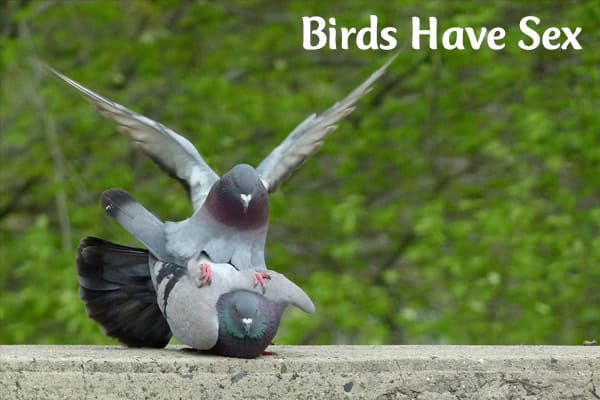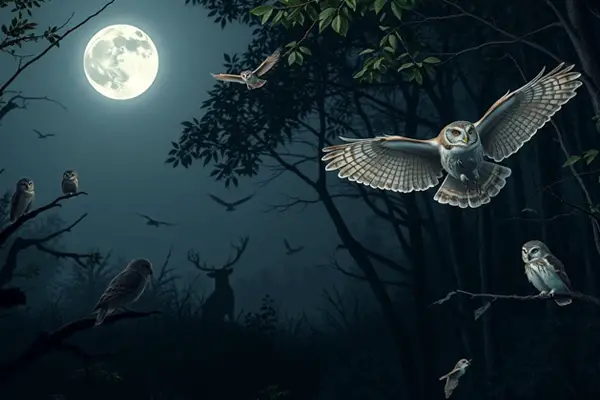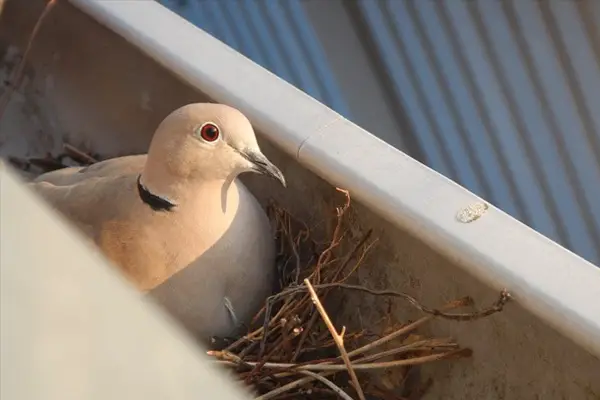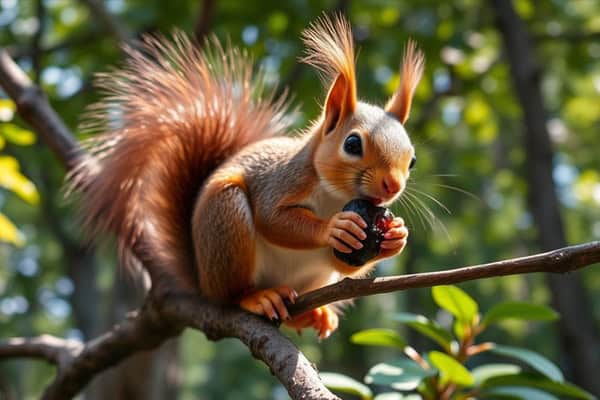Do Birds Have Sex? Understanding Bird Mating and Reproduction
Yes, birds do have sex! While it might not look quite the same as it does for mammals, birds have their own way of mating, and it plays a crucial role in their reproductive process. Here’s how it works:
Most birds don’t have external sex organs. Instead, both male and female birds have a single opening called a cloaca. During mating, the male and female birds will align their cloacas in what’s often called a “cloacal kiss.” This quick contact allows the male to transfer sperm to the female, which then fertilizes her eggs. It’s usually a very fast interaction, often lasting only a few seconds.
In this article, we’ll answer the frequent question, “Do birds have sex?” and explore their intricate mating rituals, fertilization methods, and ways of raising their young.
Key Takeaways
- Birds do have sex, but it often looks different than in mammals.
- Most birds have cloacas, which they press together briefly to transfer sperm in a process known as a “cloacal kiss.”
- Courtship rituals are a key part of the mating process and can vary greatly between species.
- Once fertilization occurs, birds lay eggs and incubate them until they hatch.
- Parental care in birds is typically strong, with both male and female often sharing the duties.
How Do Birds Mate? An Overview of Bird Sex and Reproduction
Do Birds Have Sex Organs?
Unlike mammals, most birds don’t have external genitalia. Instead, both male and female birds have a cloaca—a single opening used for excretion and reproduction. The cloaca is an all-purpose organ that handles the bird’s digestive, urinary, and reproductive functions.
In some bird species, such as ducks and ostriches, males do have a small organ resembling a penis. However, for the majority of bird species, the cloaca is the primary reproductive organ.
What is a Cloacal Kiss?
Since birds generally lack external sex organs, they reproduce through a process called the cloacal kiss. During this process, the male and female birds will touch their cloacas together for a few moments. The male transfers sperm to the female during this brief contact. It’s usually a fast process that can take only a few seconds.
This cloacal kiss is essential for fertilization, as it allows sperm to travel into the female’s reproductive system where it can fertilize her eggs. Despite the simplicity of the process, mating and reproduction in birds are often surrounded by elaborate rituals and displays.

Courtship Rituals: How Birds Find Mates
Before the cloacal kiss can happen, many bird species engage in courtship rituals. These behaviors help birds find and attract suitable mates, increasing the likelihood of successful reproduction. Here are some common types of bird courtship:
- Singing: Many male birds sing complex songs to attract females. For example, male songbirds often sing loudly and repetitively to announce their presence and show off their health and vitality.
- Dancing and Displays: Birds like cranes and albatrosses perform intricate dances to court their mates. These dances can include synchronized movements, bowing, or even hopping.
- Feather Display: Birds like peacocks display their beautiful plumage to attract females. The vibrant colors and patterns of their feathers signal health and genetic quality.
- Offering Food: Some male birds bring food offerings to females. This behavior is common in species like puffins and kingfishers, where the male presents food as a sign of his ability to provide for the female and their future chicks.
- Nest Building: In some species, the male will build an elaborate nest to attract a female. For example, male bowerbirds create intricate structures decorated with colorful objects to impress potential mates.
These rituals serve multiple purposes, from displaying the male’s fitness to forming a bond between the pair.
The Mating Process: Cloacal Kiss and Fertilization
After courtship, if the female is receptive, the birds will move to the mating process itself. Here’s how it happens:
- Alignment of the Cloacas: The male and female align their bodies so their cloacas can touch.
- The Cloacal Kiss: The male briefly presses his cloaca against the female’s cloaca. During this contact, sperm is transferred to the female.
- Fertilization: Once inside the female’s body, the sperm travels to her oviduct, where it fertilizes her eggs.
The entire process is usually quick and efficient, minimizing the risk of predator attack while mating.
Egg Development and Laying
Once fertilization has occurred, the female’s body starts developing the fertilized egg. Here’s a breakdown of this process:
- Yolk Formation: The fertilized egg yolk forms first and provides nutrients to the developing embryo.
- Shell Formation: As the egg moves through the oviduct, it is encased in layers of albumen (egg white) and a protective shell. The shell hardens to protect the embryo during incubation.
- Laying the Eggs: The female then lays the egg in a safe location, usually in a nest that she (or her partner) has prepared.
Nesting and Incubation: Protecting the Next Generation
Once the eggs are laid, the process of incubation begins. Birds typically sit on their eggs to keep them warm, ensuring the embryos develop correctly. During this period, the parents (often both male and female) will take turns incubating the eggs and guarding the nest. Incubation times vary depending on the species, but generally last between 10 to 30 days.
In some species, such as penguins, the male is primarily responsible for keeping the egg warm, while the female forages for food. In other species, both parents share incubation duties equally.
Hatching and Raising the Young
When the incubation period is over, the chicks begin to hatch. They break through the eggshell using an “egg tooth,” a small temporary growth on their beaks that helps them crack the shell. After hatching, the chicks are often helpless and rely on their parents for warmth, food, and protection.
Parental care is a critical part of bird reproduction. In many species, both parents will work together to feed and protect their young until they’re mature enough to survive on their own. Some bird species, such as raptors (hawks, eagles), will continue to care for their young for several months.
Why Bird Reproduction is Different from Mammals
Bird reproduction differs significantly from mammals in several key ways:
- No Internal Gestation: Birds lay eggs, while mammals carry their young internally until birth.
- Cloacal Mating: Birds mate using the cloacal kiss, unlike mammals who typically have internal fertilization through distinct sex organs.
- Parental Duties: In birds, parental care is often shared equally, with both parents playing an active role in raising their young.
These differences have evolved as adaptations to help birds reproduce effectively in their environments.
FAQs About Bird Mating and Reproduction
Q1. Do all birds use the cloacal kiss to mate?
Yes, most birds reproduce through the cloacal kiss. However, a few species like ducks and ostriches have males with a penis-like organ, though this is rare in the avian world.
Q2. How long does bird mating take?
Bird mating is typically brief, lasting only a few seconds. The courtship rituals beforehand, however, can take much longer.
Q3. Do birds stay with the same mate for life?
Some birds, like swans and albatrosses, are monogamous and may stay with the same mate for life. However, many species only stay together for a single breeding season.
Q4. How many eggs do birds lay at one time?
The number of eggs a bird lays depends on the species. Small songbirds may lay 2-5 eggs, while larger birds like eagles may lay only 1-2.
Q5. Do both parents help care for the chicks?
In most bird species, both parents help care for the chicks. However, in some species, only one parent is responsible for the care.
Recommended 🐦Related Articles:
- What Do Birds Eat
- Small Birds With Yellow Breasts
- Spiritual Meaning of Ants in the House
- Black Swan Bird
- Small Birds With White Stripes On Wings
- Small Birds With Orange Beaks
Bottom Line
Bird reproduction is a fascinating process that combines unique mating behaviors, specialized anatomy, and intense parental care. While birds may not mate in the same way mammals do, their process is equally intricate and effective for ensuring the survival of their species. Understanding how birds reproduce provides a deeper appreciation for the natural world’s complexity and the incredible diversity of life strategies in the animal kingdom.






